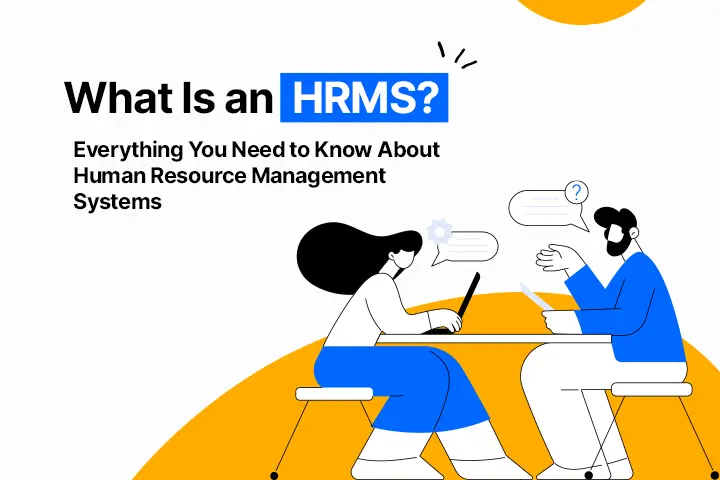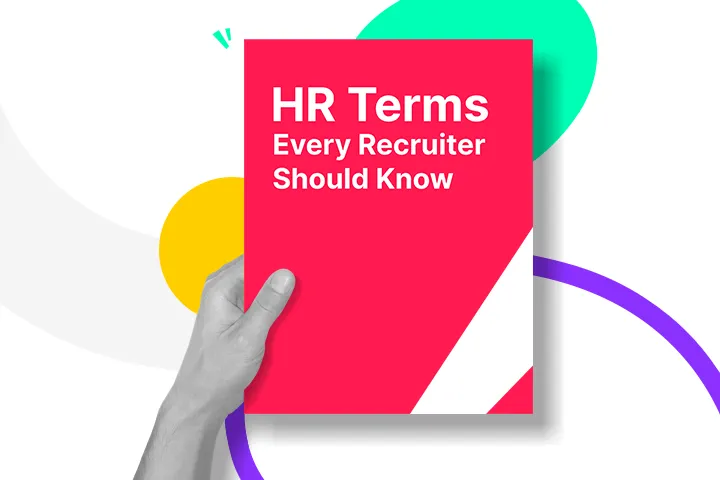Employee turnover refers to a significant place in the modern business landscape. While it might seem straightforward, employee turnover carries profound implications for businesses, both positive and negative.
Let’s delve into the meaning of employee turnover, its importance, calculation methods, causes, consequences, and strategies to manage it effectively.
What is Employee Turnover? (With Examples)
Employee turnover refers to the rate of workers leaving a company or institution they work for. It can be classified into two primary categories: voluntary turnover and involuntary turnover.
Voluntary turnover occurs when employees choose to leave the organization willingly, often due to better opportunities, dissatisfaction, personal reasons, or career growth prospects. Notably, 56% of UAE employees consider changing jobs within a year if benefits fall short, highlighting a unique trend. The UAE's expat population decline is linked to Saudi Arabia and Qatar's increasing allure for foreign investors.
In contrast, involuntary turnover takes place when employees are separated from the company due to factors such as poor performance, restructuring, layoffs, or disciplinary actions. Aiming for an 18% average annual turnover, around 6% stems from involuntary departures. While it impacts recruitment strategy, voluntary turnover (13%) takes precedence for retention.
For example, consider a software development company where a talented programmer decides to leave for a competitor due to the promise of a higher salary and more challenging projects. This is a case of voluntary turnover. On the other hand, if a company downsizes its workforce due to financial difficulties, leading to several employees being laid off, it is an example of involuntary turnover.
Suggested: Learn how to effectively reduce time to review candidates.
Why is Employee Turnover Important?
Employee turnover goes beyond a mere numerical value – it reflects an organization's vitality and performance. It shows if employees are happy with the company and employer or are likely to leave. Elevated turnover rates disrupt workflows, reducing productivity while inflating costs linked to recruitment, training, and new employee assimilation. Moreover, it casts a shadow over company culture, dampens employee spirits, and undermines customer satisfaction.Yet, moderate turnover can breathe vitality into the workforce, ushering in fresh perspectives, diversity, and innovative ideas.
The financial aspect looms prominently as well. Replacing employees incurs substantial costs, compelling businesses to actively tackle both involuntary and voluntary turnover. According to Gallup estimates, the expense of replacing an employee hovers between half and twice their salary. To illustrate, losing a $80,000/year employee could translate to a staggering $160,000 in organizational expenses. For instance, in a 100-person company with an average salary of $50,000 and a 20% turnover, the expenditure of replacing 20 workers at $100,000 each sums up to a colossal $2 million annually.
Notably, turnover stemming from hiring mismatches, leading to swift replacements, exacts a toll not only financially but also in terms of lost productivity, waning morale, and compromised work quality. In navigating the terrain of turnover, businesses must judiciously balance retention and recruitment strategies to foster enduring success.
Suggested: Get insights on how AI is revolutionizing recruitment!
How to Calculate Employee Turnover? - A Numerical Approach
SHRM recommends calculating employee turnover rate by dividing the number of separations in a given month by the average employee count on the payroll, then multiplying by 100. This process helps determine the percentage of employees who have left during a specific period.
Here are a few steps to make this process easier for you:
1. To calculate the turnover rate, first establish the total headcount, encompassing all payroll employees, excluding temporary workers from separate agencies.
2. Next, calculate the average employee count per month by dividing the total by the number of months.
3. Next, factor in total separations, including both voluntary and involuntary terminations, but excluding temporarily laid-off, furloughed, or leave of absence employees.
Now that you have all the data, you can use the turnover rate formula:
Turnover Rate = (Number of Employees Separated / Average Number of Employees) × 100.
This formula provides insight into the rate at which employees are leaving the company and helps HR professionals and management assess the impact of turnover on the organization's stability and growth.
Suggested: Learn how to efficiently reduce time to hire in 10 simple ways.
Why is Employee Turnover a Problem?
While some degree of turnover is inevitable and even beneficial, excessive turnover can lead to a host of problems for organizations.
High turnover rates can strain resources, disrupt operations, and impact team dynamics. It also leads to knowledge loss as experienced employees leave, taking their skills and institutional knowledge with them. This loss can negatively affect customer relationships and the overall quality of products or services offered by a company.
The causes of employee turnover are multifaceted and can vary from one organization to another. Some common causes include poor management, inadequate work-life balance, limited growth opportunities, lack of job satisfaction, and unfavorable organizational culture. Identifying these factors and addressing them proactively is crucial for reducing turnover and its negative consequences.
Suggested: Get familiar with the top 8 HR Trends for 2025!
10 Tips to Reduce Employee Turnover:
Managing employee turnover is essential for sustaining a healthy and thriving organization. Employers need to adopt strategies that address both voluntary and involuntary turnover.
While voluntary turnover might be challenging to prevent entirely, several steps can be taken to mitigate its effects:
[fs-toc-omit] 1. Enhance Employee Engagement
Foster a positive work environment where employees feel valued, recognized, and rewarded. Regular feedback, skill development opportunities, and work-life balance initiatives can boost morale, improve candidate experience, and reduce voluntary turnover amongst employees.
[fs-toc-omit] 2. Enable Career Development
Establish clear pathways for career advancement and growth within the organization. Employee Retention is more likely to improve when employees see opportunities to develop their skills and progress in their careers.
[fs-toc-omit] 3. Ensure Competitive Compensation and Benefits
Align compensation packages with industry standards and offer a variety of benefits to cater to diverse employee needs. This helps retain employees who might otherwise seek better offers elsewhere.
[fs-toc-omit] 4. Focus on Onboarding and Training
A well-structured onboarding process accelerates new employees' integration into the company culture. By creating a positive initial experience, you can increase their sense of belonging and engagement.
[fs-toc-omit] 5. Promote Transparent Communication
Communication is key! Promoting honest and effective communication helps employers communicate company vision clearly. This helps employees understand what is expected of them. Similarly, a two-way communication will enable employees to understand employee concerns and solve them effectively. Communication also helps employers support professional development and foster an environment for success!
[fs-toc-omit] 6. Recognize and Reward Outstanding Performance
Implement a robust system for recognizing and rewarding exceptional employee performance. Acknowledging achievements motivates employees and reinforces their commitment to the company.
In addition, addressing employee turnover requires proactive measures in dealing with specific managerial responsibilities:
[fs-toc-omit] 7. Check with Culture & People Managers
Ensure regular check-ins with reports and discussions about turnover data with your culture and people managers. This will help up planning engagement campaigns to retain employees.
Recruiters must also account individual preferences to see what works for every employee.
[fs-toc-omit] 8. Hire/Promote Internally!
Publicize internal openings amongst existing employees to make growth possibilities available. This is not only a great way to motivate employees but also helps reduce recruitment costs.
Also read: What is rightsizing?
[fs-toc-omit] 9. Leverage data to identify patterns
It is crucial for employers to investigate reasons for high turnover in specific departments. This helps address role-related issues and managerial support concerns.
The are some tried and tested tips for employers to effectively manage employee turnover and ensure long-term organizational success.
Suggested: Download our interview ebook for expert tips and templates on shortlisting, outreach, and effective interviews.
What are the Positive Consequences of Employee Turnover?
While the negative consequences of employee turnover are well-documented, it's essential to recognize that turnover can also bring positive outcomes. Moderate turnover can inject fresh perspectives, diverse talents, and innovative ideas into the workplace. New employees bring unique experiences and skills that can lead to improved processes, increased efficiency, and enhanced problem-solving.
Furthermore, turnover can encourage internal mobility and career progression for existing employees. As new positions open up due to turnover, employees may have opportunities to take on more significant responsibilities and leadership roles within the organization.
Suggested: Use Qureos’ hiring guide for an effective and efficient hiring process.
Reduce Employee Turnover With AI Recruiters
Recruitment softwares including AI powered hiring platforms can help you reduce your employee turnover rate. Harnessing the power of AI-driven hiring platforms and expert recruiters, these software solutions, exemplified by platforms such as Iris, revolutionize the hiring process by continuously learning and adapting from every interaction. This leads to a personalized candidate journey, where recommendations evolve in tandem with changing preferences and job requirements, ensuring a seamless match between candidates and roles.
The pivotal advantage lies in the data-driven insights that the recruitment platforms offer. By accumulating and analyzing data throughout the hiring process, organizations gain a profound understanding of candidate behaviors and engagement drivers, facilitating informed decision-making.
Moreover, these insights extend beyond turnover metrics, encompassing essential aspects of employee satisfaction and performance. With the ability to proactively address challenges like absenteeism and scheduling through automated alerts, AI recruiters contribute to enhanced employee commitment and reduced turnover.
By simplifying transactional processes, from accurate payroll to seamless onboarding, AI recruiters ensure a positive employee experience, a cornerstone of heightened engagement and diminished turnover rates.
Suggested: Explore and compare top hiring tools to make hiring practices easier.
Final Thoughts: Navigating the Complex Landscape of Employee Turnover
Employee turnover is a critical factor that can significantly impact an organization's success. While some degree of turnover is inevitable, it is essential to manage it effectively to minimize its negative consequences.
By focusing on strategies that enhance employee engagement, recognition, and growth, businesses can create an environment that promotes retention and fosters a culture of continuous improvement.
Furthermore, recognizing the potential benefits of turnover, such as fresh perspectives and innovation, can lead to a more nuanced understanding of this complex phenomenon. As organizations navigate the challenges and opportunities presented by employee turnover, the key lies in maintaining a delicate balance between stability and change.
Suggested: Generate customized job descriptions using Qureos’ free AI based job description generator!




